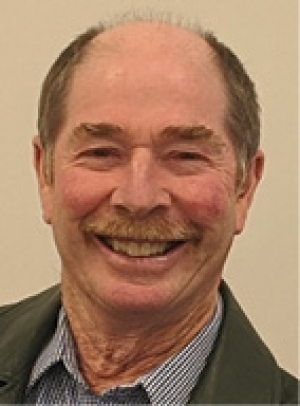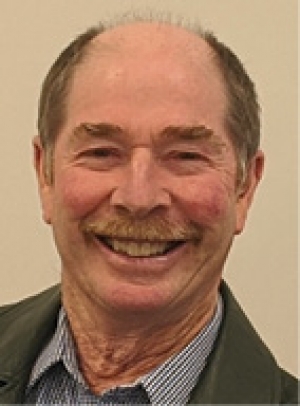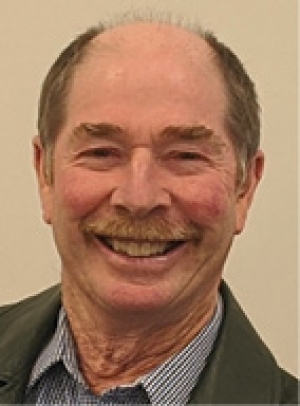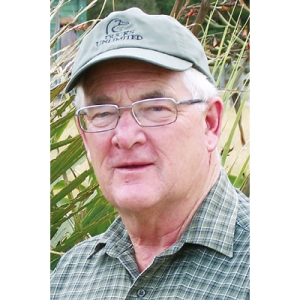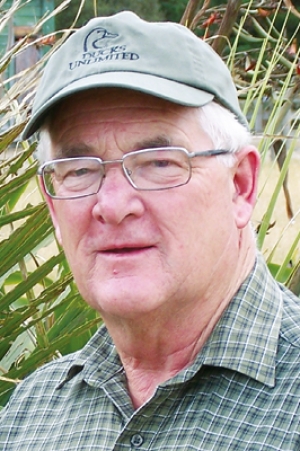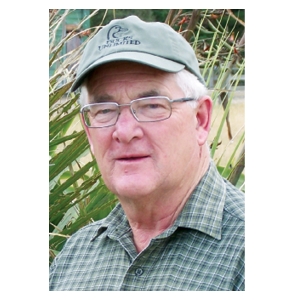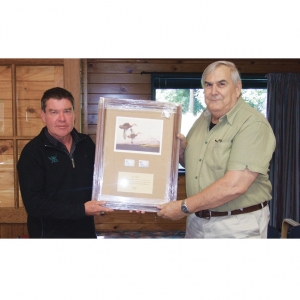Displaying items by tag: Presidents
From the President
The duck shooting season is upon us so I would like to share some observations I have made.
Some long-term hunters (50-plus years) say the season has been one of the worst they can remember.
Fish & Game has been telling us that the bird counts are 15 per cent better than last year. Frankly, I do not believe it.
The paradise duck numbers appear to be doing OK, along with the grey teal, but the mallards seem to be in real trouble.
Fifteen years ago, the pond in front of our house was crowded with ducks when the duck shooting season was on; that is not the case now with fewer than 20 birds there at any one time.
I was talking to Anne Richardson at Peacock Springs last month and she said there used to be hundreds of ducks camped there during the season; now there are hardly any.
I have three reasons why I think this is:
• The introduction of steel shot
Steel does not have the same killing power of lead. This leads to a lot more wounded birds that fly away and die elsewhere and do not get counted in the daily bag.
• The unpinning of semi-automatic shotguns
This allows five shots to be fired and creates many more wounded birds because they are much further away.
• The season is too long
When I first started shooting, the season was the month of May – four weeks and then it was over. I would like to see it
reduced back to that again.
The birds are pairing up now and to give them the best chance, they need to be left alone.
Curiously, the major decline of the mallard population started about the same time as steel shot and unpinned shotguns were allowed.
From the President
Hi everyone, and a Happy New Year to you all.
I am sure we would all like to think that the Covid-19 disruption to our lives might improve this year.
Because of a contact that our editor, Alison, has made with the Te Henga wetland in Auckland, DUNZ has been able to create a new wetland specifically with pāteke in mind at Te Henga.
This really has gone a full circle – a lot of the pāteke originally bred by our members under our captive breeding programme were released years ago in the region in the hope they would bolster numbers in what was a stronghold area for the species.
This appears to have worked and we are now able to supply habitat for them as well.
A great project from the DU perspective as it is open to the public, run by a trust, and managed by the enthusiastic members of Forest and Bird up there.
It ticks all our boxes for sustainable projects, similar to Wairio.
It is just a pity we have only a few members in the Auckland region available to visit the site.
Regarding this year's conference in Wellington, we have yet to finalise the facilities, but Zealandia is our bus trip destination, and they have suggested that, if any of our members would like to turn up there on the Friday night, they would organise a Kiwi experience walk for them as well.
This would need to be booked, so something for all of you intending to come to think about.
Cheers
Ross Cottle
From the President
Hi everyone. Last month we got the exciting news that Wairarapa Moana has been granted Ramsar status as a wetland of international importance, joining six other wetlands in New Zealand.
I hope this will mean repair work on the Matthews Lagoon reticulation project at Wairio will be completed sooner rather than later.
Our conference was held in Gisborne this year and it was most enjoyable. Everything ran very smoothly and according to plan. Timing of all the events was spot on.
We were extremely privileged to be able to visit to Nick's Head Station, which we all thoroughly enjoyed.
Next year's conference will be in Wellington, with a trip to Zealandia on the agenda.
Our congratulations to Isaac Conservation and Wildlife Trust's Anne Richardson, who was made an Officer of the New Zealand Order of Merit in June.
From the President
I am privileged to be the new DUNZ President appointed by my fellow DU Directors at our meeting at the Napier Conference in August. I thank them for their confidence and hope I can make as big a contribution to wetland and waterfowl conservation as our past President Ross Cottle. To Ross, a big thank you for your stewardship of DU over many years and I know as a Director you will continue to keep DU on track. To your wife Sharon, we really appreciate the support you have given Ross and DU. The strength of DU is based around its members and the sterling work of Liz Brook, editor of Flight, Jan Abel, secretary and Michelle Cooper, facilitator of the Quack Club and DU webmaster.
Our AGM in Napier was an outstanding success. We had a great venue and good attendance by members who supported the fund raising auction. The field trip on Saturday morning to Pekapeka Swamp was led by Steve Cave, Wetlands Manager with the Hawke’s Bay Regional Council who talked about their restoration programme for the wetland. They have an excellent interpretation trail with boardwalks which take you right into the middle of this wetland. Pekapeka is located on SH2 south of Hastings and is well worth a visit.
In the afternoon we visited the Ahuriri Estuary on the edge of Napier, now only 20 percent its former size following land uplift in the 1931 Napier earthquake and associated drainage work. Ahuriri is a very valuable estuarine wetland with a rich Maori history, high biodiversity values with a number of northern hemisphere breeding birds like godwit using the area in our summer, and diverse recreation values.
The future of wetlands is both exciting and challenging. Projects like Wairio in the Wairarapa where DU has gained the support of a diverse group of organisations and individuals in helping to restore this degraded wetland. It is a great model which should be extended to other regions where many other wetlands require help.
The future of wetlands is largely dependent on private landowners and organisations like DU, Fish & Game, Game Bird Habitat Trust, National Wetland Trust, DOC, QEII, Forest & Bird, Regional Councils, community biodiversity groups and others. We all have a strong interest in wetland conservation and often work independently of each other. I hope we can take advantage of every opportunity to work more closely together in future. It is important that legislation, like the Resource Management Act which underpins much of this work, is not weakened during the current review.
A decision has been made to hold the 2014 AGM in the Wairarapa at Brackenridge Country Retreat near Martinborough. Look forward to seeing you all there.
John Cheyne
From The President
The last few months since my appointment at the AGM in Napier, has gone quickly. Looking back we are making good progress on a number of fronts.
The 1200 metre low bund was constructed at Wairio to capture and hold extra water and it is performing exactly as it was designed. When I was on site there in October it was holding about 25 hectares of water with a maximum depth of 1.2 metres. Local DU members and volunteers had commenced planting along the bunds to provide cover for wildlife and protect the bund from wave lap erosion. Excellent habitat for a wide range of wetland birds including bittern, pied stilts, dabchick and waterfowl. Jim Law, Ross Cottle and team are now looking at replicating this for the block immediately to the south. This “think big” approach is certainly paying off.
I am also the DU nominee on the NZ Game Bird Habitat Trust which distributes about $100,000 each year to worthwhile wetland projects and $2 from each waterfowl hunter’s licence goes into a national fund for this purpose.
The Trust members met in November in Blenheim to inspect the Nelson – Malborough Fish and Game Para Wetland project located alongside SH1 between Picton and Blenheim. This large project has the same challenges as many wetlands: declining water levels and invading willows. There is a long term restoration plan in place currently being funded by the Trust at about $18,000 per year. The sight of large dead crack willows as you drive past looks like a grave yard but they are starting to win the battle. Native fish and wetland birds, including waterfowl are the beneficiaries.
On behalf of the Board, I hope you all had a very merry Xmas and will have a prosperous New Year. The AGM will be in the Wairarapa this year and planning is well underway to make this a success. Look forward to seeing you there.
John Cheyne
From the President
Well, spring has passed with good numbers of ducklings observed on local wetlands in Central Hawke’s Bay. The problem now is, will the weather gods give us enough rain to top the wetlands up before a projected dry summer? Fingers crossed.
DU NZ has supported a number of wetland enhancement projects over many years but we have also been sponsoring a number of students carrying out research on wetlands and birds. This issue of Flight features updates on research being carried out by students from Victoria University on Wairio wetland and a student from Massey University working on bittern at Lake Whatuma. I look forward to reading their reports. (see pages 6-7 and pages 10-11).
The DU Directors are meeting later this month and the location for our 2015 annual conference will be confirmed.
I trust you all had an enjoyable Christmas and New Year.
John Cheyne
From the President
This adversely impacts on water levels in our wetlands and the biodiversity they support. We cannot ignore that climate change is having an effect.
What can we do about it?
which the DU Board will be addressing over the next 12 months.
The dates for this year’s AGM are at the Distinction Hotel, Palmerston North, for the weekend of Friday July 31 to Sunday August 2, 2015.
John Cheyne
QSM for DUs first president Ian Pirani
Ian received a Queen’s Service Medal (QSM) in that year’s Queen’s Birthday honours for services to conservation.
In 1974 Ian was a co-founder of Ducks Unlimited and was the first president of DUNZ until 1980. During that time Ian and his wife Dawn initiated a Pateke breeding programme and nesting boxes for Grey Teal throughout NZ.
Ian and his wife Dawn established the largest water fowl collection in Australasia, and were the first to privately breed Whio in captivity.

